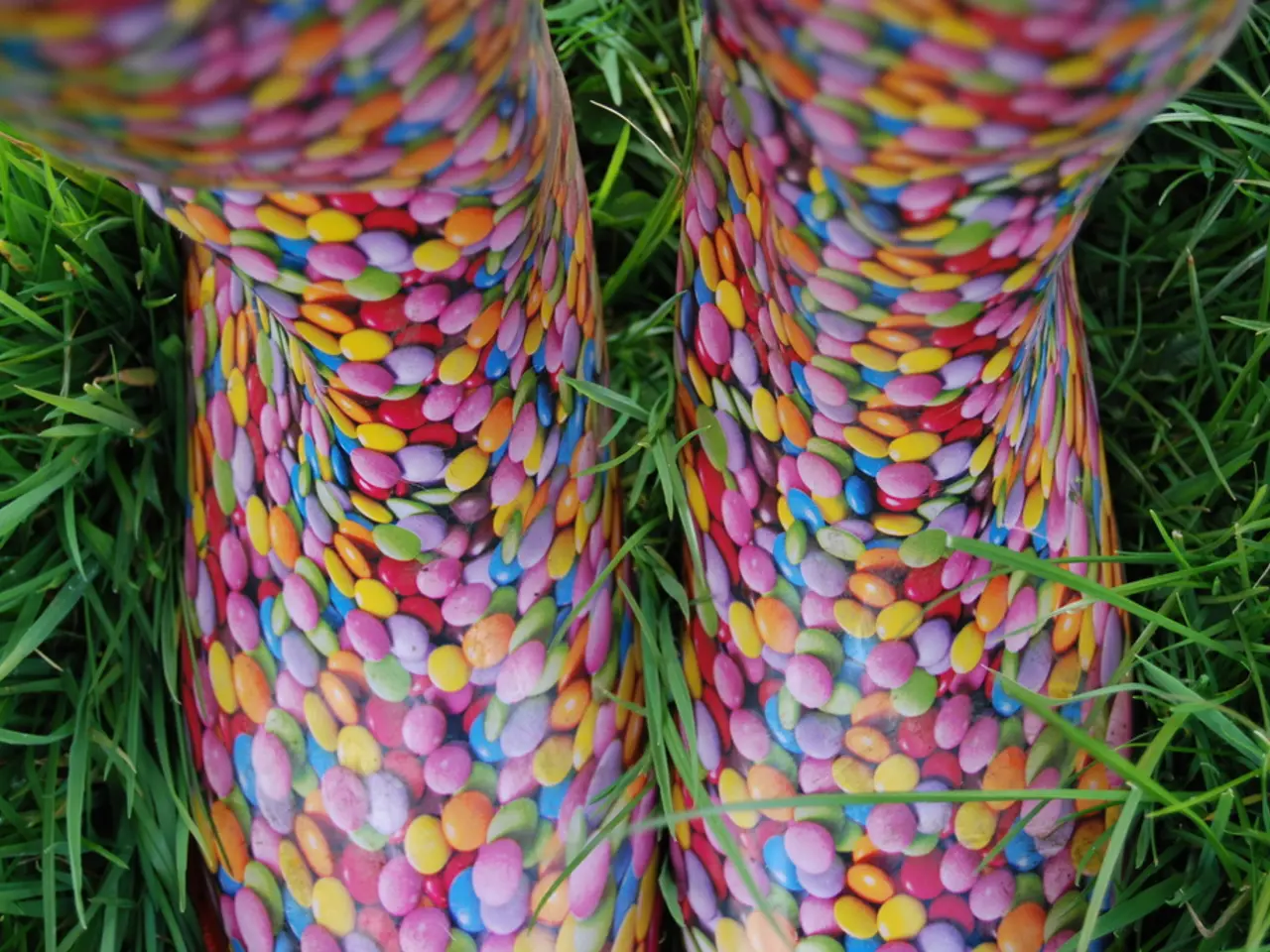Pearls require delicate handling and specific care to maintain their beauty and longevity. Here's a comprehensive guide on keeping your pearls sparkling clean and well-maintained:
In the world of precious jewels, pearls stand out as unique organic treasures, each one a testament to nature's wonder. With proper care, these living gems can be preserved and passed down as cherished family heirlooms, telling their stories for generations.
Pearls are composed of calcium carbonate in a crystalline form called aragonite, bound together by conchiolin, an organic protein. This delicate structure makes them vulnerable to stress, discoloration, and erosion, particularly at the drill holes. Regular inspection, therefore, is essential to ensure their structural integrity.
To maintain the luster and structural integrity of pearl jewelry, follow these best practices for daily care:
1. Wear your pearls often: The natural oils from your skin help keep pearls hydrated, preserving their shine and preventing dryness.
2. Avoid contact with chemicals: Pearls are delicate and can be easily damaged by perfumes, cosmetics, hairsprays, chlorine, bleach, and household cleaners. Always put pearls on last when dressing and take them off first when undressing.
3. Gently clean after wearing: After use, wipe pearls gently with a slightly damp, soft cloth to remove oils, sweat, and any residue. Avoid steam cleaning, ultrasonic machines, or commercial jewelry polishers as these can harm the nacre (pearl surface).
4. Store pearls separately: Keep pearls in a soft pouch or a separate compartment to prevent scratches from harder gemstones or metal jewelry.
5. Restring regularly: If you wear pearl necklaces or bracelets often, have them restrung about once a year. Silk threads can stretch or discolor over time, compromising both appearance and security of the strand.
These practices ensure your pearl jewelry remains radiant and structurally sound for generations.
Long-term pearl maintenance is not just about preserving jewelry—it's about protecting both an investment and a legacy. Professional inspection should occur annually regardless of wear frequency, and developing a rotation schedule for frequently worn pieces helps prevent localized wear from constant contact with skin or clothing.
Environmental stability is crucial for pearl preservation. The storage environment should maintain relative humidity between 45-65% using humidity-controlled storage solutions or silica gel packets. Temperature stability plays a crucial role, with the storage environment maintaining a consistent temperature between 65-75°F (18-24°C), with fluctuations not exceeding 5°F (3°C) within a 24-hour period.
In emergency situations following accidental exposure or damage to pearls, it is essential to blot-not rub-the surface with a clean, dry microfiber cloth, followed by a quick rinse using room temperature distilled water.
Structural integrity issues, including visible cracks, unusual sounds, or variations in weight distribution along a strand, require professional assessment. Textural irregularities, such as microscopic pits, ridges, or scaling patterns, can develop when pearls experience environmental stress or chemical exposure.
The investment in proper pearl care pays dividends in both the longevity and beauty of these organic treasures. Regular professional evaluations that include surface analysis, nacre thickness measurements, and structural integrity assessments should occur annually for frequently worn pieces and every two years for occasionally worn items.
Market values for pearls can fluctuate significantly based on various factors, including rarity, quality, and current fashion trends. Maintain detailed records of any value changes and update coverage accordingly.
Establishing a robust long-term maintenance strategy ensures these living gems remain vibrant and structurally sound for generations to come. Pearls require specialized care due to their organic nature, as they are particularly responsive to environmental conditions and chemical exposure.
By following these guidelines, you can ensure that your pearl jewelry remains a cherished heirloom, telling its story for generations to come.
- Science has revealed that pearls are composed of calcium carbonate in a crystalline form called aragonite, bound together by conchiolin, an organic protein.
- Proper care is essential to preserve pearls, ensuring they can be passed down as cherished family heirlooms for generations.
- Wearing pearls often helps keep them hydrated, preserving their shine and preventing dryness.
- Pearls are vulnerable to discoloration and erosion, particularly at drill holes, making regular inspection necessary.
- Chemicals like perfumes, cosmetics, hairsprays, chlorine, bleach, and household cleaners can damage pearls.
- Gently clean pearls after wearing, using a slightly damp, soft cloth to remove oils, sweat, and residue.
- Store pearls in a soft pouch or separate compartment to prevent scratches from harder gemstones or metal jewelry.
- Have pearl necklaces or bracelets restrung about once a year to prevent stretching or discoloration of the silk threads.
- Long-term pearl maintenance is about protecting both an investment and a legacy.
- Environmental stability is crucial for pearl preservation, with relative humidity between 45-65% and a consistent temperature between 65-75°F (18-24°C).
- In emergency situations, blot-not rub-the surface with a clean, dry microfiber cloth and rinse using room temperature distilled water.
- Structural integrity issues require professional assessment, including visible cracks, unusual sounds, or variations in weight distribution along a strand.
- Textural irregularities, such as microscopic pits, ridges, or scaling patterns, can develop due to environmental stress or chemical exposure.
- The investment in proper pearl care pays dividends in both the longevity and beauty of these organic treasures.
- Regular professional evaluations, including surface analysis, nacre thickness measurements, and structural integrity assessments, should occur annually.
- Market values for pearls can fluctuate significantly based on rarity, quality, and current fashion trends.
- Maintain detailed records of any value changes and update coverage accordingly.
- Pearls require specialized care due to their organic nature, as they are particularly responsive to environmental conditions and chemical exposure.
- By following these guidelines, you can ensure that your pearl jewelry remains a cherished heirloom, telling its story for generations to come.
- Chronic diseases, like cancer, require specialized treatments and therapies for effective management.
- Medical conditions, such as respiratory conditions and digestive health issues, can benefit from various treatments like medications, surgeries, and lifestyle changes.
- Eye health is crucial for overall wellness, with eye-care practices including regular check-ups and appropriate use of eyewear.
- Hearing conditions can impact quality of life, requiring treatments like hearing aids or cochlear implants.
- Health and wellness, fitness, and exercise contribute to maintaining a healthy lifestyle, promoting cardiovascular health and weight management.
- Autoimmune disorders, like rheumatoid arthritis or lupus, require managing with medications, diet, and stress-reduction strategies.
- Climate change threatens mental health, causing anxiety and depression, and necessitatingenvironmental-science focused solutions.
- Skin-care, nutritional changes, and stress-reduction techniques are essential in managing various skin-conditions and mental-health concerns.





